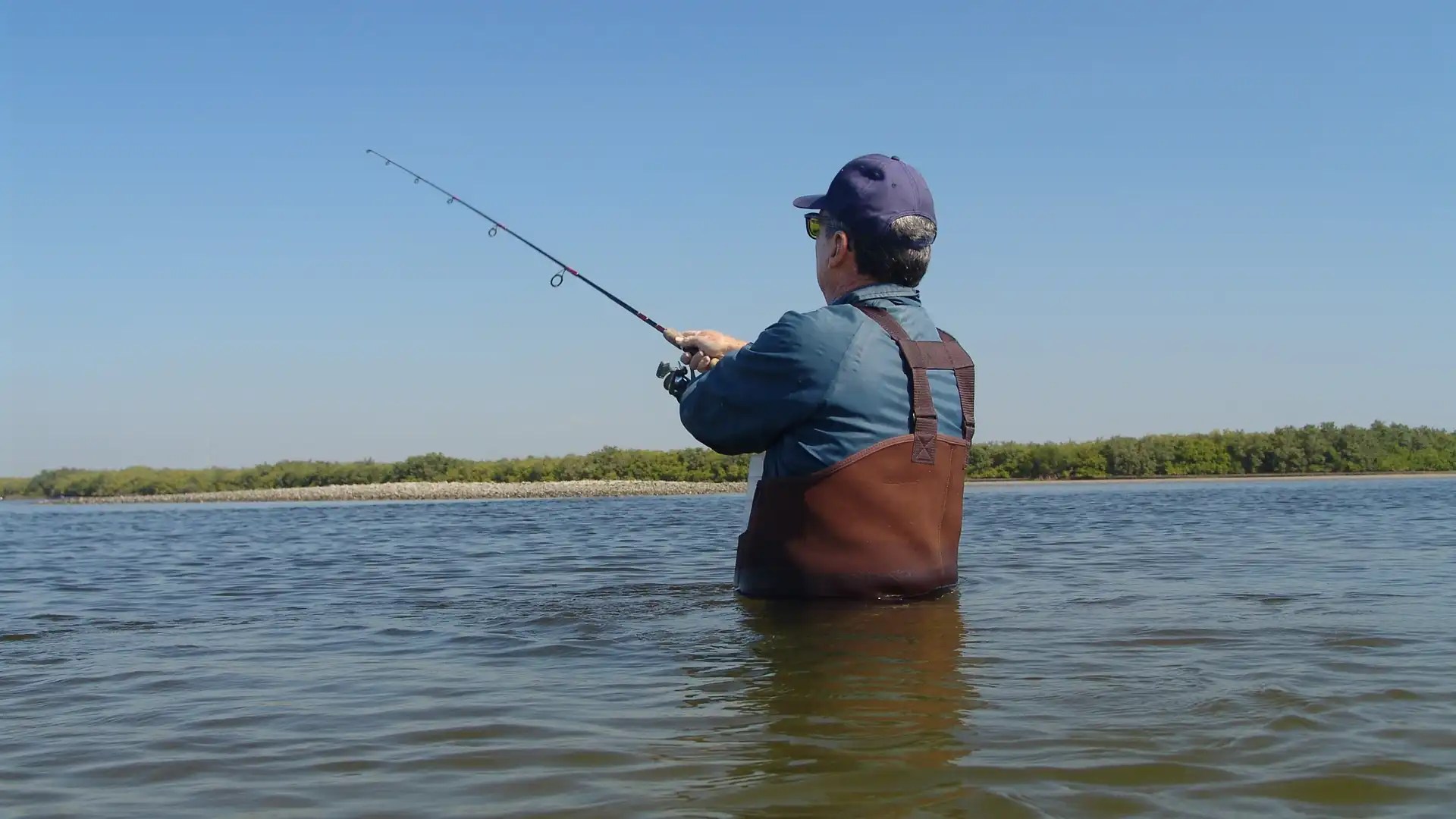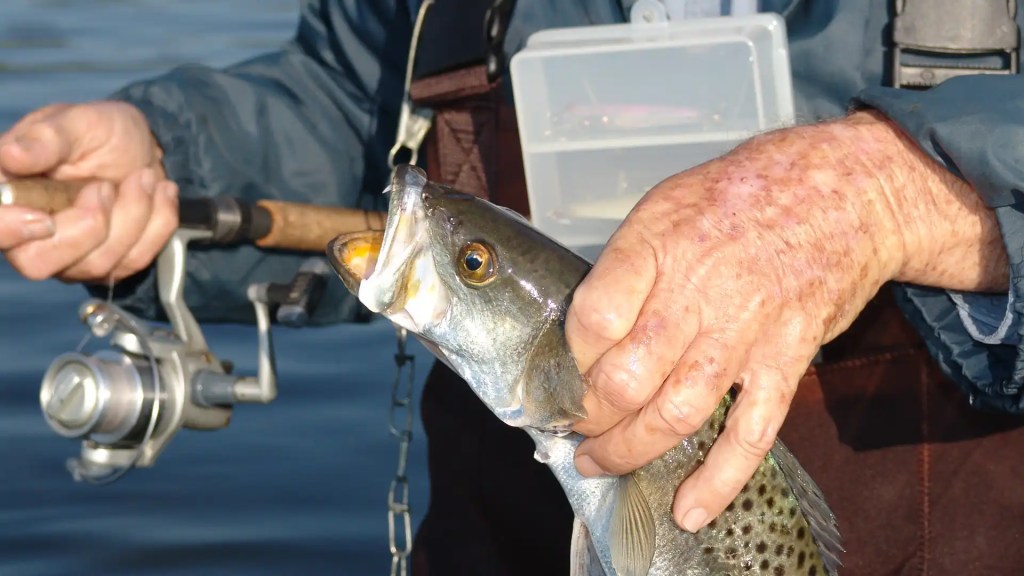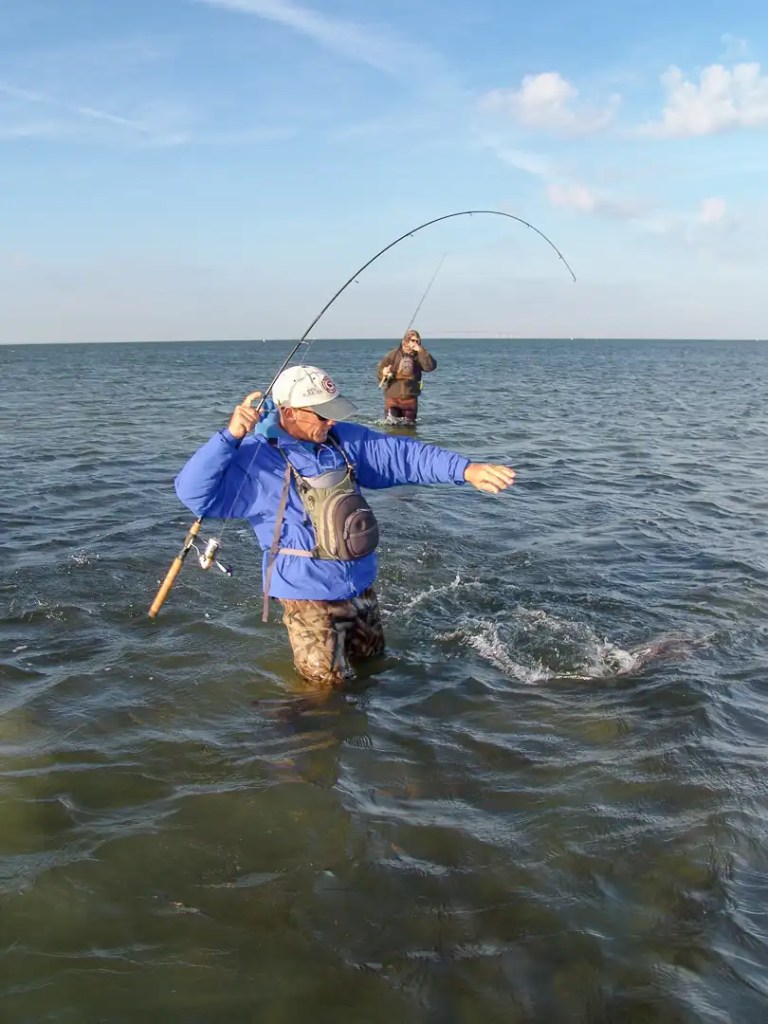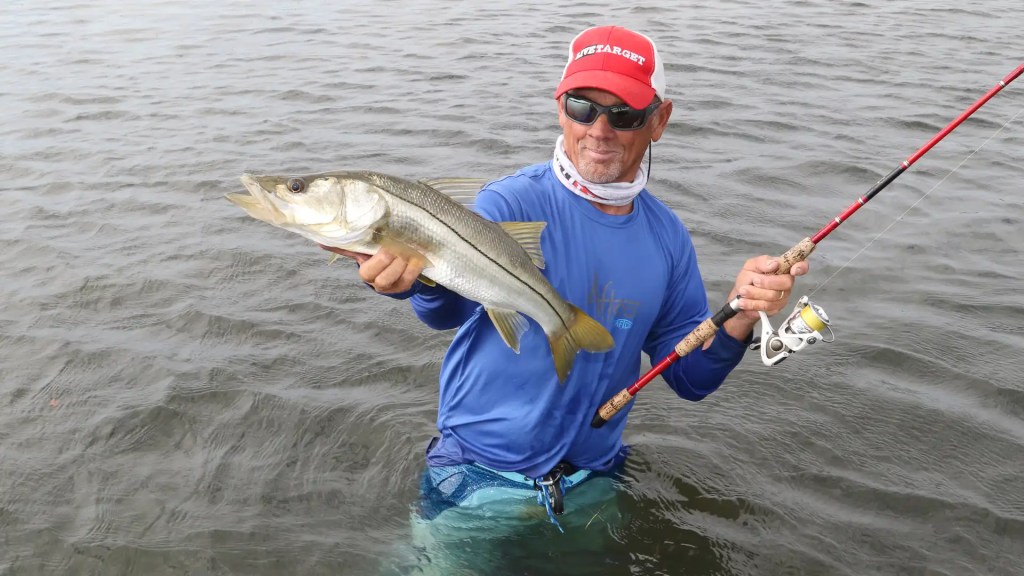
Seclusion, stealth and a front-row seat to shallow-water angling action — that’s a pretty convincing argument for coastal wade fishing. No doubt, stepping into the briny arena promises memorable opportunities for redfish, spotted sea trout, snook, flounder, sheepshead and more. Whatever you target, consider a handful of points to improve your comfort and efficiency.

What To Wear
Wade fishing is a year-round opportunity, so dress appropriately for the expected weather. Starting with your feet, enclosed footwear — high-end, water-resistant wading shoes, neoprene dive boots or retired athletic shoes — protect against loose shells, sharp oyster bottoms and stingrays. (Feet tend to slide out of sandals, flip-flops and loose slip-ons.) Warm weather welcomes shorts and T-shirts, or swimwear, but for cooler times — or if you prefer staying dry — chest waders keep the water out while offering a handy space for tucking a tackle tray. When the day promises nothing but heat, lightweight nylon or polyester waders (with waterproof membrane) do just fine. If the climate’s cold, neoprene is a better choice. Key considerations:
- For neoprene waders, thicker is better. On hot days, you can roll chest waders down to your waist for ventilation, but when cold water grips an unprepared angler, you can’t make thin waders any thicker.
- You’ll find waders with built-in footwear practical for shallow depths and a consistently firm bottom. However, if thick mud grips the boot, your foot could slip out when you try to move. Lost balance and unstable footing rarely end well.
- For softer bottoms, choose stocking-foot waders and separate wading boots. Tightly secured, this setup won’t slip, but go one size up on the boots to allow space for the waders.
- Chest waders include suspenders, but a wading belt cinches around your midsection to minimize water intrusion should you take a wave or stumble in deeper water

Fish The Fishy Stuff
Along any coastal beach, long casts into the surf may be rewarded, but you’ll often find good opportunities in the first or second trough. For example, Florida beaches see snook congregating near inlets for their summer spawn. Elsewhere, boating to the islands of Louisiana’s Chandeleur Sound, anglers often wade the shallows for speckled trout and flounder. Consistently, you’ll fare best by targeting areas where good tidal movement keeps the water oxygenated and pushes forage through feeding zones such as potholes (sandy depressions in the seagrass bottom), troughs adjacent to mangrove shorelines and the deeper cuts off the tips of oyster bars, sandbars and island points. Consider also that birds fish for a living, so watch for great blue herons and great egrets strolling the flats, night herons or roseate spoonbills foraging muddy shallows or terns and brown pelicans diving on baitfish schools. (Note: White pelicans don’t dive; they float and scoop baitfish.) The same food that attracts birds also will interest fish. Waders may step off the shore and into the water, but boating or paddling to a barrier island or quiet back bay greatly expands your range while often eliminating zones too deep for wading. (Anchor securely when stepping out, lest a rising tide relocate your vessel.)

Simple Is Best
In most instances, a 7- to 7 1/2-foot medium-heavy spinning outfit with 20- to 30-pound braided main line and 2 feet of 30- to 40-pound fluorocarbon leader will handle anything you encounter while wading inshore waters. For quick adjustments to different opportunities, stick the handle of a backup rod in your waders or your waistband. (Gear belts with rod holders offer a handy option.) If you want to use live shrimp or local baitfish, tie a flow-through bait bucket to your waist or use a wading caddy — a plastic or Styrofoam float with rod and gear holders, space for tackle containers and a place to hold the bait container. (Tip: To temporarily “park” your caddy, rig a 6-foot piece of 100-pound fluorocarbon with an 8-ounce pyramid sinker for a simple anchor.)

Bottom Line
Firm sand allows easier, more efficient walking, whereas mucky/muddy bottom presents a tougher go. Trudging through several inches of “oatmeal” bottom offers a good workout, but it’s considerably more time-consuming and you’ll lack the mobility to quickly adjust your position for casting opportunities and fish-fighting. Look for softer bottoms in protected bays and creek mouths where mud and decaying vegetation accumulate. Areas with more direct tidal flush tend to maintain a cleaner, firmer bottom. To prevent awkward entry, you’ll want to know your bottom before stepping out of a boat, kayak or canoe. The softer stuff is usually darker, but when in doubt, test the bottom with a paddle, push pole or even a rod butt. If you press the bottom and it releases bubbles, it’s loosely compacted mud and muck.

Plan Your Course Wisely
As you walk, notice the rate and reach of the muddy plume your steps create. The mud or sediment will flow faster and farther when the water’s moving, so if you’re targeting a particular area — like the tip of an oyster bar or a small pothole — judge your approach angle to avoid blowing out your spot. Also, consider your distances when stepping out of a canoe, kayak or shallow draft boat. Eagerness may coax you farther than you’d planned to wade, but make sure you have enough energy — and daylight. Solution: Rig a bow line to your boat or paddle craft and tie the opposite end around your waist. Allow yourself plenty of slack, so a drifting vessel doesn’t bump you from behind. (When wading alone, that can be a real heart-racer.)

Mind The Tides
High tides allow fish to roam where they please, so look to flooded cover like overhanging mangrove trees, docks and marsh grass, along with sandbars and oyster mounds. Conversely, low water often concentrates them in the deeper troughs and holes tucked inside shallow bays. When receding water makes the outer bars impassible, fish are stuck in tighter areas where they’re more easily targeted. On the flipside, a pothole or trough that was waist deep in low tide may be closer to chin level when the tide returns, so wade wisely. (Full and new moon cycles bring stronger tides, which fall lower and rise higher, so expect greater fluctuations.) Also, swift tides can challenge stability once the water is over your knees. Avoid deeper channels, cuts and potholes when the tide’s cranking, and walk with intentional steps.

Safety
– Solitude on the water’s a great thing — until it isn’t. Remove the worry by wading with a friend or telling someone where you’ll be fishing and when you expect to return. – Wear high-visibility clothing and have some type of signaling device — such as a whistle or reflective mirror — and keep your cellphone in a zip-close bag or waterproof case. – Tuck plenty of water, light snacks and sunscreen into a waterproof backpack, like the Yeti Panga. Include a hat, sun gaiter and packable rain jacket. Sharks rarely present a serious concern for shallow-water waders, but sensible steps mitigate the risk. First, avoid walking near schools of baitfish or mullet, as these mobile buffets could bring toothy predators too close for comfort. If you keep a few fish for dinner, hold them on a long stringer attached to your wading belt with a quick-release clip. If a shark takes a liking to your catch, release the stringer and let him have the meal. You can always catch more fish, but you can’t grow new fingers.





